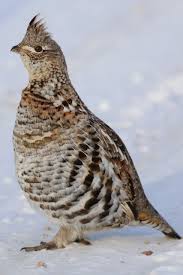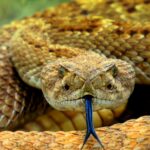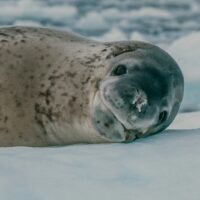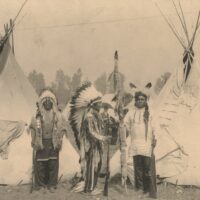Scientific Classification:
Scientific name: Caracara lutosa
- Phylum: Chordata
- Class: Aves
- Order: Falconiformes
- Family: Falconidae
When did it become extinct?
The last reliable sighting of this bird was in 1901.
Where did it live?
This bird of prey was found only on the island of Guadalupe. Two hundred and forty miles off the northwest coast of Mexico lies the island of Guadalupe, a small volcanic island, 35 km long and about 9 km at its widest point. Even though it is barely a speck in the vastness of the Pacific Ocean, Guadalupe was once home to a number of animals that were found nowhere else. One of the most famous Guadalupe residents was the quelili. This bird of prey was very closely related to the caracaras of Central and South America, and perhaps the ancestors of the quelili found themselves on the remote, rocky outpost of Guadalupe after being blown from the mainland during a storm.
Behavior and Ecology:
The caracaras are all meat eaters, but they don’t have the hunting prowess of eagles or falcons. They are quite feeble fliers and are unable to swoop on their prey from a great height. Instead, they prefer to catch and eat small prey that can be easily overpowered, and they often resort to scavenging. The English-speaking inhabitants of Guadalupe called the quelili the “eagle,” but like the other caracaras, the quelili was no formidable aerial hunter. It apparently fed on small birds, mice, shellfish, worms, insects, and carrion when the opportunity arose.
There are a few accounts of how the living quelili behaved. Its broad wings were suited to loping flight quite close to the ground, and like the other caracara species, it may have been equally at home on the ground, stalking among the low vegetation on its long legs. Small flocks of these birds were often seen in flight, but it is unclear if there was an ordered social structure. Living caracaras are normally solitary, but they will tolerate each other around a carcass, albeit with bouts of noisy quarreling. Perhaps the quelili was a little friendlier to others of its kind. They were known to communicate with complex displays, one of which involved the bird extending its neck to full length and then arching backward until its head almost touched its back (the crested caracara displays in the same way). Unfortunately, the significance of these displays is now lost, but perhaps it was the way that one quelili asserted dominance over another.
Impact of Human Activity:
The quelili was probably the dominant predatory land animal on Guadalupe for tens of thousands of years, but due to its position in the food chain and the small size of its island home, it would never have been very common. An island like Guadalupe could have never supported more than a couple hundred quelili, but in the narrow geological window in which it lived, this bird was a successful scavenger and predator.
This success continued up until the early eighteenth century, at which time humans appeared on the scene. The first humans to make any real difference to the ecology of Guadalupe were whalers and hunters, who came to catch and kill sea otters, fur seals, and elephant seals. On their ships, they carried goats as a source of meat and milk, and as a way of caching supplies on their hunting routes, they left some goats on Guadalupe.
The idea was that the goats would survive and the whalers could pick up some fresh meat and milk the next time they were passing. Not only did the goats survive, but they bred in profusion, and before long, there were thousands of them running riot over the once virginal land. Goats in the wrong place can be devastating, as any gardener will attest. They eat anything and everything, and the numerous unique plants that covered Guadalupe were stripped away by thousands of hungry mouths. This in itself was not the nail in the coffin of the quelili, but the huge herds of goats soon attracted people. Some came to herd the goats and others came to hunt them, and herder and hunter alike both considered the quelili to be a meddlesome foe that would kill and eat goat kids whenever the opportunity arose. It is very unlikely that the quelili could have captured and killed a healthy goat kid, but it was probably partial to the flesh of a goat carcass. Goatherders may have seen a group of quelili tearing at the carcass of a dead goat kid and presumed the birds were responsible for its death.
By the nineteenth century, the quelili was goat enemy number one and it was hunted mercilessly. By the 1860s, rifles and poison had pushed it to the brink of extinction. As if angry goatherders were not bad enough, the quelili soon found itself pitted against an even more relentless foe: the ornithological collector. The age of discovery gripped the educated world, and the race to collect and catalogue the world’s treasures was well and truly on. Rarities are coveted by collectors, and institutions and wealthy individuals soon got wind of the disappearing Guadalupe bird fauna, including the quelili. Back in the nineteenth century, the word conservation didn’t really exist, and the collectors systematically exterminated the quelili; the skins were sold to the highest bidder.
Amazingly, one small group of quelilis survived this onslaught, but these were accounted for by Rollo Beck, an ornithologist and collector who landed on the island on December 1, 1900. No sooner had he landed on the island than he saw a flock of 11 quelili heading straight for him. In the mistaken belief that the bird was still common, he shot all but two of the flock, and in doing so, Rollo Beck consigned the quelili to extinction.
Current Status of Guadalupe:
- Guadalupe was once home to an array of unique plants and animals, but we know only a fraction of what species the island once supported. At least six species and subspecies of bird have become extinct since humans first colonized the island.
- Guadalupe was covered in distinct vegetation types, ranging from areas of succulent herbs to forests of endemic cypress. Today, almost all of this has disappeared and most of the vegetation is little more than a few centimeters tall, all thanks to the tireless mouths of the introduced goats.
- Guadalupe is governed by Mexico, and even though the island has been a protected reserve since 1928, only recently has anything been done to restore the habitats on the island. In 2005, a scheme was initiated to remove the goats from the island, and it is hoped that once these destructive herbivores are gone, the island’s vegetation will regenerate naturally.
- Caracara bones from the Rancho La Brea asphalt deposits, approximately 40,000 years old, are supposedly very similar to quelili bones, and as California is so close to Guadalupe, it is possible that the quelili’s ancestors once lived there.




















